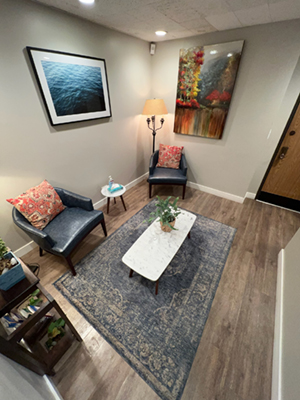Endodontic Retreatment in Los Angeles

An Endodontic Retreatment is performed after failure of initial root canal treatment. Most endodontic treatments succeed with no future implications and your tooth may last for as long as the other natural teeth. In some cases, the pre-existing infection may not heal properly, pain may last longer than expected, or, new problems may develop due to contamination or broken restorations. In these cases, endodontic retreatment is necessary to further alleviate your discomfort and increase success.
Some common reasons why you might need endodontic retreatment:
Curved canals not fully treated
Sometimes during the previous procedure, the curved roots may not have been accessed and treated properly. Your endodontist will use top of the line techniques and armamentarium to fully treat your root canals. Ultrasonics, stainless steel and nickel-titanium rotary plus hand files are used in conjunction with antibiotics and irrigation agents to properly clean the root canals.
Missed complicated canal anatomy
Complicated canals may not have been detected during the previous procedure. For example, you may have more canals than anticipated. If a canal was missed and not cleaned during the previous procedure it will cause irritation and sometimes infection. Your endodontist is primed to evaluate and treat missed anatomy to increase success.
Restoration placement delay or saliva contamination
If delay occurs with placement of a final restoration or saliva ingresses into the treated roots, bacteria may contaminate the area and cause infection. Timely restoration is always advised after a root canal treatment.
New Decay
Sometimes the procedure is done perfectly but a new cavity can form under the restoration which causes leakage, contamination, and possibly a new infection.
Broken restorations or cracks
A filling or crown may fracture or a shallow crack may occur inside the tooth causing leakage and contamination after the initial root canal procedure. Any type of bacterial ingress may lead to a new infection.
Endodontic retreatment has to be determined by your endodontist after evaluation. At times a 3D cone beam CT scan is necessary to fully evaluate the situation. If necessary, the procedure will start by reopening your tooth to access the previous root canal treatment. At times, complex restorative material may need to be removed to gain entry. After gaining access to the root canals, your endodontist will clean the canals and use magnification to further examine for any unusual anatomy. Once clean and disinfected, the roots will be permanently sealed and a temporary filling will placed until your dentist can place a new crown or restoration to rebuild full functionality.
Endodontic retreatment has to be determined by your endodontist after evaluation. If necessary, the procedure will start by reopening your tooth to access the filling material in your root canal. Complex restorative material may need to be removed before accessing your root canal. After gaining access to the root canal, your endodontist will clean the canals and use magnifiers to further examine for any unusual anatomy. A temporary filling will be done and your dentist will then place a new crown or restoration cover to restore full functionality.
